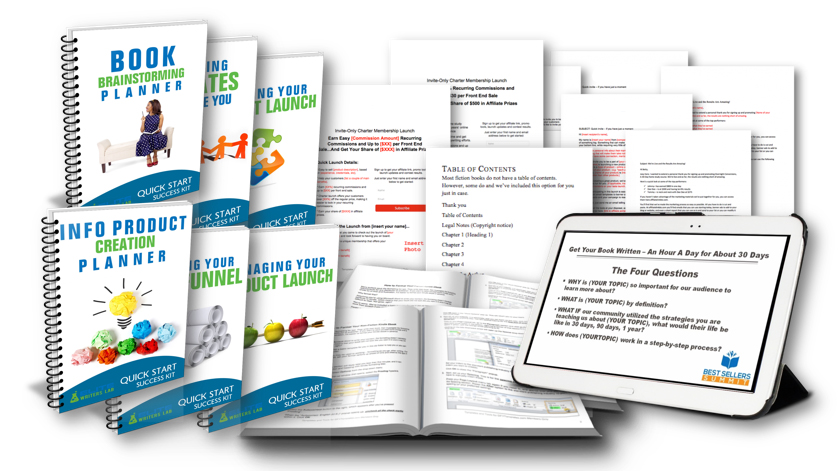When it comes to being in business for yourself, there are two realities you can testify to be true. It is easier than ever to become an entrepreneur and it is harder than ever to become an entrepreneur.
The former is correct because the world is your oyster, thanks to the myriad of platforms, services and tools available at your disposal to sell a product, offer a service or market a product. However, the same is also true with the latter, for the simple reason the competition is smarter, making it harder (but not impossible) to stand out from the crowd.
With this in mind, the following ten tips are practicable insights that can not only improve your operation, but are ones you can immediately implement into your own daily business practices.
1. Get Your Finances in Order
Once you go into business for yourself, you can no longer be as carefree with your finances as many are when you are working for someone else and can rely on a steady paycheck.
Unless you are one of the very few who has received a large prelaunch injection of funding, you will be tapping into your savings in order to help you to launch, maintain and when the time is right – expand your enterprise.
Subsequently, the key in all this is proper business financing.
So, prior to launching your small business, be sure you:
- Start a budget and stick to it.
- Pay off all your debts.
- Cut back on your spending.
- Determine how much you need to get by.
- Calculate how much you can spend and use to maintain your start-up venture.
2. Operate within Your Means
Whether you have taken out a small business loan or have received financial backing from a family member or friend, it can be tempting to splurge and spend every available cent on your business. But, don’t do it, and here’s why not.
Even though you may be thinking that the more you spend on your company, the more successful it will be, that’s incorrect.
It’s because a successful business does not, and will not generate sales, boost clientele and potentially win awards by spending all of its capital on operations.
Instead, if you’re a start-up mode, best to operate within your available means.
In other words, don’t…
- Take out enormous loans.
- Work in luxurious settings.
- Unnecessarily expand into foreign markets.
- Add a family relative to the payroll just to be nice.
At the end of the day, if you for example only had $23,000 to work with every year, then that is what you must do – stay within your budget.
Work smart. If there’s one single bit of self-fulfilling advice failed business owners wish they had been given it would be that, in hindsight, they wished they would have managed the money they had at the time of start-up… better and made wiser choices.
3. Save on Marketing Dollars
Thanks to the proven effectiveness of digital marketing, you don’t need six-figure promotional campaigns to get noticed. Instead, with a free Twitter account, a strong Facebook acumen and a small $100 Google advertising budget, you can market your brand without having to claim bankruptcy.
On the list below you will see there’s a lot more you can do that requires very little capital, and will help you promote your business. Incorporate and apply these tips into your daily business regimen:
- Engage with your audience and thank them for any and all kind words they post about you and your business.
- SEO your posts. Search engine optimization (SEO) is still key.
- Supplement your social media marketing with email marketing
- Be active, not passive, on social media. Concentrate on only a couple of platforms.
- Website design is still one of the most important investments you can make.
4. Work with Experts
Many people have the notion that entrepreneurs are jacks of all trades.
This may be true at the earliest stages of a start-up, but eventually business owners will add and grow their talent pool. It is important to remember, however, that when you do hire professionals to join your small firm, you need to do your best to locate and attract experts.
5. Treat Your Customers Right
Have you heard of customer relationship management (CRM)? This is a method of assisting and supporting existing customers and prospects which uses data, analytics, and automation to reach out and interact with them on your behalf. It’s an effective technique that squarely positions your customers and prospects front and center in your business, with the intent and purpose of making them feel important (which in fact they are) to you.
Food for thought: Your company will only generate the kind of profits you desire, if and when you treat customers the right way on a consistent basis.
Amazon is a perfect example of a company that not only understands, and pays attention to customer satisfaction, but they wholeheartedly practice what they preach. You only need to look at their self-serve grocery stores that use the honor system for products. If you were charged for an item you did not buy, you are able to get an immediate refund.
It doesn’t matter who you are, what industry you are in, or how popular your products are. Your clients are your ticket to the winner’s circle in the business owner’s game of success. Whether it is abiding by the motto of “the customer is always right” or offering easy refunds, there is always something a little extra you can do to attract and keep the support and trust of consumers.
6. Listen to Client Feedback
How do you know if you’re doing great or failing miserably? Of course, it’s only natural to refer to and use your generated revenue and bottom line as a measuring stick. But, it’s not the most telling. The number #1 indicator is client feedback, which can be priceless. FACT: Feedback from your customers will be a direct reflection, and in proportion to how you treat your customers.
Since they are the ones who do not have any skin in the game and interact with you or your business, they have an in-depth understanding of what is right or wrong with your operation. It may be an unpleasant user experience on your website, or it might even be your mobile applications that are too slow.
There are a good many business owners who tend to despise negative feedback but devour and love it when it’s sugary and sweet. Never forget, feedback is an important tool that can help you grow your business.
7. Always Deliver More Than Expected
There is a well-worn saying in the business world: “Under-promise and over-deliver.” It might come across to you as being nothing more than a relic from the past, but rest assured, it remains one of the very best ways to win the hearts and trust of your audience and customers as well as, investors, and partners.
Think about this: If your company says it will take three weeks to get something done, but you complete it in one week. Wouldn’t you be satisfied? You bet.
It’s been estimated that more than 500,000 people become entrepreneurs every single month. It would be awesome if all of them were successful, but unfortunately, they’re not.
Other studies have revealed that 30% of these businesses shut their doors within the first two years of opening. Unfortunately, that number surges to 66% within 10 years. But clearly, you do not have to be one of these statistics. Not with the right attitude, strategy and know-how you’ve received here!
Get More Content Like This:
If you found this advice helpful, you’ll find more of it in our Elite Writer’s Lab, and the good news is, you can join and get instant access to a huge library of content, just for writers, by clicking here. And you can get in for just $1.

You’ll also have access to a huge library of other expert interviews, courses and resources for turning your writing skills into a living. You’ll love our Quick Start Success Kit that will you publish and market your first book or information product quickly!









